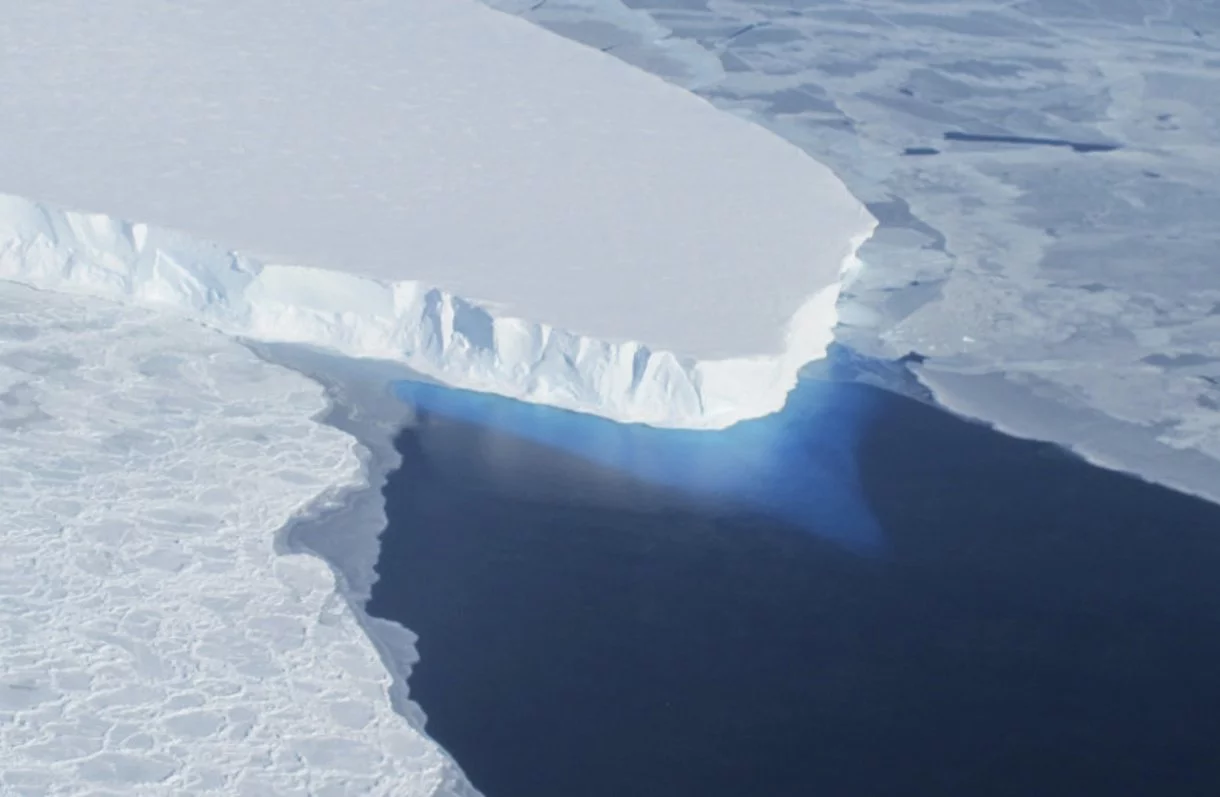Scientists from the University of East Anglia, at great Britainidentify the processes that contributed to the disbursement Antarctic Glacier.
The researchers, led by Dr Tiago Dotto, from the University of East Anglia’s Center for Oceanic and Atmospheric Sciences, published their findings in a peer-reviewed study in the journal Nature Communications on Wednesday.
In the study, the researchers found just that ice shelves in close proximity to each other contribute to the instability of other ice shelves downstream.
In addition, the researchers found that the ocean gyre, a circulating current system adjacent to the Thwaites Ice Shelf, can affect the amount of meltwater flowing under the shelf. As the gyre weakens, increased amounts of warm water can reach areas beneath the ice sheet, causing them to melt.
The Thwaites Ice Sheet, one of the largest in West Antarctica, is part of the Thwaites Glacier, which, according to the University of East Anglia, has been melting rapidly over the past two decades and is the largest contributor to glacial melt on the continent. rate increase.
The researchers used data collected from sensors installed under the ice sheet and found that seawater under the ice sheet warmed significantly between January 2020 and March 2021.
“Here we use in situ oceanographic observations to show that the TEIS cavity [Thwaites Ice Shelf] warmed between January 2020 and March 2021, and simultaneously the glacial meltwater content increased in the upper layers,” the researchers said.
Hot water melts the bottom of the Thwaites Ice Shelf
The biggest contributor to warming is water from the Pine Island Ice Shelf, which is located east of the Thwaites Ice Shelf, which contains glacial meltwater.
Meltwater combines with salty water as the oceans thaw the base of the ice sheet and can form a layer of warm, buoyant water that melts the base of the Thwaites Ice Sheet..
“We have identified other processes that can affect the stability of the ice shelf, revealing the importance of local ocean circulation and sea ice,” said Dotto.
“The deep waters around the poles, the various warm Antarctic waters, are a key factor in melting the ice sheet base. However, in this study, we show that a significant amount of heat in the shallow layers beneath the ice shelf can be contributed by water coming from other nearby melting shelves.”
“Because of that, what happens to one ice sheet can affect adjacent ice sheets, and so on.”.
This process is important for regions of major ice sheet melting, such as the Amundsen Sea, because one ice sheet lies next to another, and heat transfer from one ice sheet can reach the next through ocean circulation.
“Recent ocean observations and simulations show that the east side of TEIS [Thwaites Ice Shelf] supported by mCDW [modified Circumpolar Deep Water] which had previously circulated near Pine Island Bay (PIB),” the study notes. “A survey conducted with an autonomous underwater vehicle beneath the ice shelf front near the west side of TEIS also indicated the presence of mCDW from PIB at depths of 800-1000 m, suggesting a deep link beneath TEIS through which deep warm water flows to the West. “.
In January 2020, researchers drilled holes in the ice and inserted sensors that measure temperature, currents and salinity under the Thwaites Ice Shelf. Based on one year’s observation, the researchers hypothesized that the heat that caused the permafrost to melt could not have come from the Thwaites Ice Sheetbecause the sensor does not detect strong defrosting in its installation area.
Using this data along with computer simulations, the researchers found that water from the Pine Island Ice Shelf was able to reach beneath the Thwaites Ice Shelf.
The researchers identified how this process occurs using simulations generated by computer models, as well as data collected from labels affixed to seals. They found that the gyre near the Thwaites Ice Shelf weakens during the winter, allowing more heat to flow to the area under the shelf.
Additionally, satellite imagery reveals unusually high concentrations of ice near the Thwaites Ice Shelf during the summers of 2020 and 2021.
Based on their findings and computer models, the researchers suggest that the gyre is even weaker, causing excess meltwater from adjacent ice shelves to enter the Thwaites Ice Shelf as it cannot be moved to other areas by ocean currents.
Finally, the researchers note that “a change in spin direction can heat up the ice sheet cavity more quickly… because it can uplift isopycnics.” [capas] higher under the ice shelf and carry deeper warm water.”

“Entrepreneur. Internet fanatic. Certified zombie scholar. Friendly troublemaker. Bacon expert.”







